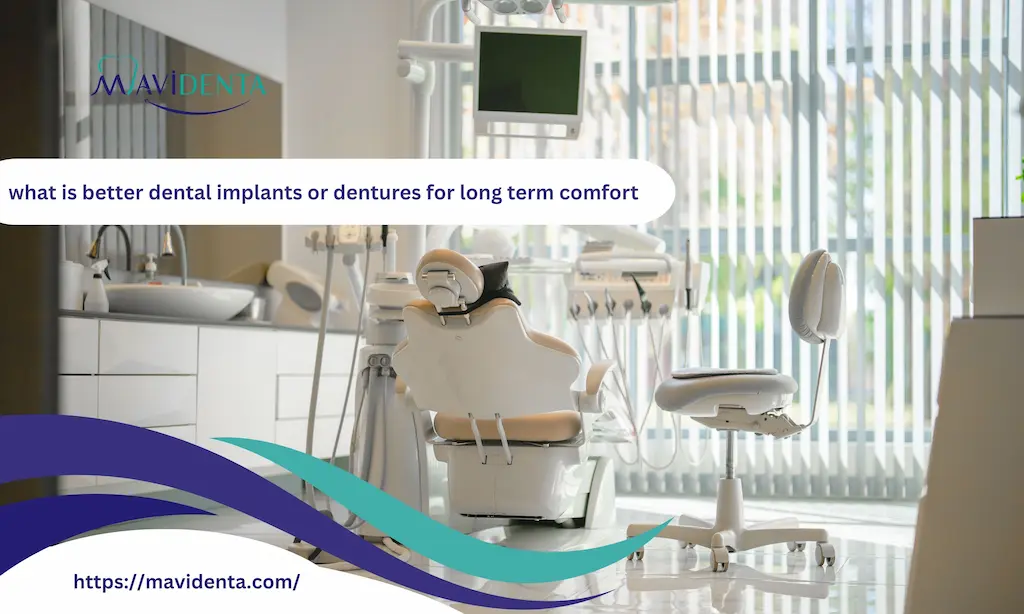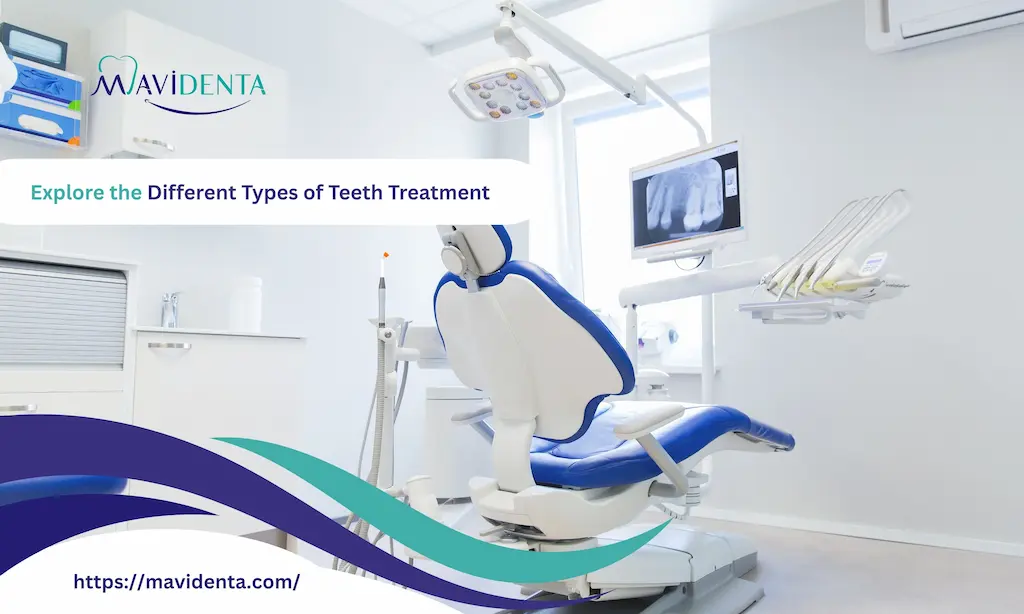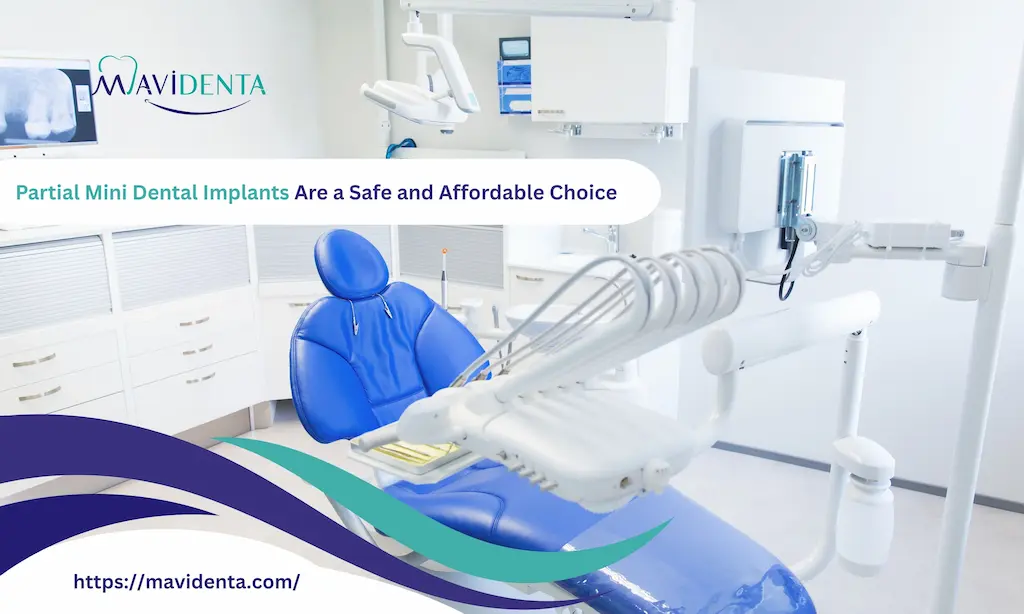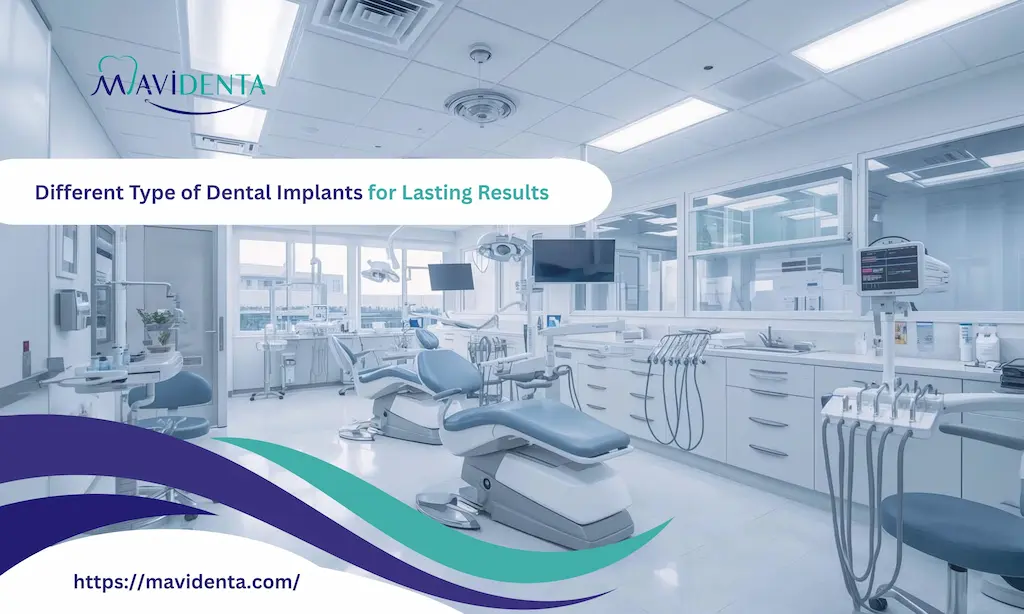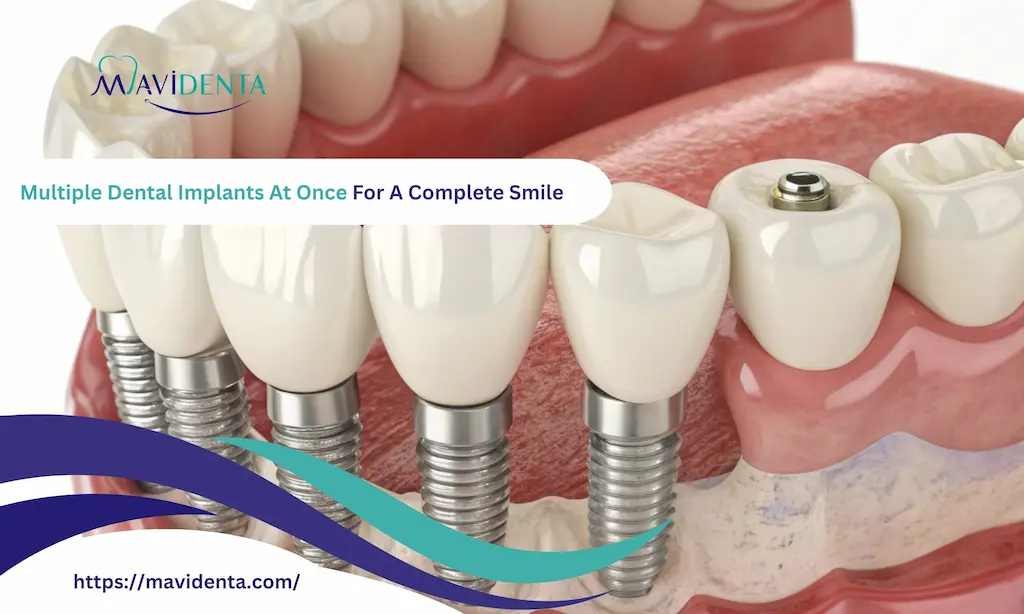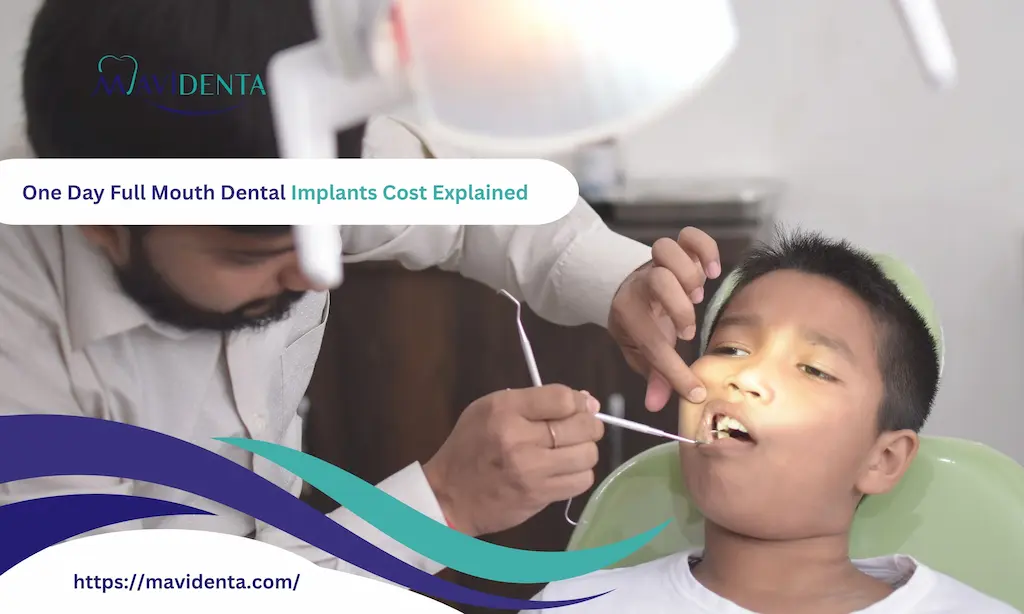Tooth loss caused by gum disease is one of the most common challenges adults face worldwide. Instead of temporary fixes, many patients now consider all on-4 dental implants gum disease as a lasting solution. At Mavidenta, we guide you through safe, advanced procedures designed to replace lost teeth and improve oral health outcomes for the long term.
What is the Gum Disease?
Gum disease is an infection in the gums and the structures under them. It begins with plaque buildup and, if ignored, turns into a chronic problem that harms both soft tissue and jawbone. Early care often stops it; late care becomes more complex.
The effect on teeth is direct: pockets form, bone recedes, and teeth lose their anchor. People sometimes ask about dental implants with receding gums or dental implants with no gums; those are tricky situations that need specialist planning because implants rely on healthy bone and tissue.
Treatment choices depend on how far the disease has gone. In mild cases, retreatment and hygiene help; in severe cases, replacing teeth lost through gum disease may need full-arch solutions. Some patients explore implants for severe gum disease as a durable alternative to dentures with gum disease.
Explore the all on 4 dental implants for diabetics complete guide.
Can You Get All On-4 Dental Implants If You Have Gum Disease?
Yes, but only after the infection is under control. Surgery on active gum disease raises real risks.
- The first step is to treat the inflammation and stop bleeding gums with professional cleaning and antibiotics if needed.
- Dentists check bone support next. If bone is weak, grafting or regeneration may be required before implants.
- People often ask how gum disease affects the teeth; it eats away at the bone that holds teeth steady.
- Simple repairs like composite bonding with gum disease usually fail if the underlying infection isn’t fixed.
- For severe cases, implants for severe gum disease become an option once tissue and bone are rebuilt.
- Some patients travel for care; implants for severe gum disease in Turkey are widely available with experienced teams.
- If gums have receded, dental implants with receding gums still work after soft-tissue or bone reconstruction.
- In cases of near-total loss, dental implants with no gums require staged rebuilding before placing fixtures.
- Many prefer an alternative to dentures with gum disease implant-supported bridges or full-arch implants feel more stable.
- Replacing teeth lost through gum disease can be permanent when you combine periodontal treatment and careful implant planning.
- When appropriate, all on-4 dental implants gum disease offers a durable, full-arch solution but only after disease control.
How Gum Disease Affects the Success of All On-4 Implants?
Heading | Details |
|---|---|
| Gum disease creates ongoing infection that slows down healing after implant surgery. | Inflamed gums bleed easily, and this makes it harder for implants to fuse with bone. |
| Bone loss is one of the biggest concerns. Without enough support, implants cannot stay firm. | Many patients ask how gum disease affects the teeth — the truth is it weakens both teeth and bone at the same time. |
| Periodontal disease and implant failure are strongly connected when the infection is left untreated. | Receding gums open gaps around implants, which allows bacteria to collect and damage the area. |
| Composite bonding with gum disease is not effective because it only hides surface issues, while deeper damage continues. | In advanced stages, dentists may recommend implants for severe gum disease after bone grafting or regeneration. |
| Some choose implants for severe gum disease in Turkey, where clinics provide advanced techniques to manage bone and gum loss. | Patients with major tissue loss may also hear about dental implants with no gums, but this usually requires rebuilding gums first. |
| Alternatives to dentures with gum disease, such as implant-supported bridges, give more stability for daily use. | With careful treatment and planning, all on-4 dental implants gum disease can succeed, giving patients a stable and natural smile. |
Explore Pros and cons of all on four dental implants explained.
Why Treating Gum Disease Before Getting All On-4 Dental Implants?
- Treat the infection first. Surgery on an active gum infection usually fails.
- Bleeding, swelling, and pus must stop before any implant work begins.
- Bone loss is the main concern—implants need solid bone to hold them.
- If bone is weak, grafting or regeneration is often required first.
- You can’t hide active disease with cosmetic fixes; composite bonding won’t stop the infection.
- Controlling inflammation improves healing and lowers the chance of implant failure.
- Periodontal disease and implant failure are tied when bacteria remain in the mouth.
- Rebuilding tissue helps when patients have dental implants with receding gums.
- In cases of widespread loss, staged treatment rebuilds the mouth before implants.
- For severe cases, implants for severe gum disease become possible after proper rehab.
- Some patients seek implants for severe gum disease in Turkey where combined care is offered.
- If gums are nearly gone, dental implants with no gums require prior soft-tissue reconstruction.
- Alternatives to dentures with gum disease, like implant-supported bridges, work better after treatment.
- Replacing teeth lost through gum disease is safer when the disease is controlled first.
- Proper periodontal care makes all on-4 dental implants gum disease predictable and long-lasting.
- In short: fix the infection, rebuild support, then place implants—that order saves time and outcomes.
Explore All on 4 Dental Implants Cost Overseas Savings Guide.
What are Advantages of All On-4 Dental Implants for Patients with Gum Disease?
Heading | Details |
|---|---|
| A fixed arch feels like real teeth. | You chew confidently. |
| You stop relying on sticky adhesives and loose dentures. | It’s an alternative to dentures with gum disease. |
| Controlling infection first makes implants far more reliable. | Periodontal disease and implant failure drop a lot after treatment. |
| The procedure can prevent further bone loss. | That matters when gum disease affects the teeth. What is bone support? Bone support is the answer. |
| All-on-4 uses fewer implants but gives full-arch support. | Recovery is quicker than many full-replacement options. |
| For people with receding gums, | dental implants with receding gums work better after grafting. |
| Composite bonding with gum disease won’t replace missing teeth. | Implants do. |
| If many teeth are gone, | replacing teeth lost through gum disease with All-on-4 restores speech and eating. |
| Some clinics offer staged care | treat the gums, rebuild bone, and then place implants for severe gum disease. |
| Many patients consider implants for severe gum disease in Turkey | because of bundled periodontal and implant care. |
| Even when soft tissue is scarce, | dental implants with no gums can be possible after reconstruction. |
| Long term, | all on-4 dental implants gum disease give stability, easier hygiene, and a natural smile. |
Explore more theAll on 4 dental implants vs snap in dentures full comparison.
Risks of Gum Disease After Receiving All On-4 Dental Implants:-
- Even after implants, the mouth still needs care. Skip brushing and things can turn bad fast.
- The main worry is peri-implantitis an infection around the implant that behaves like gum disease.
- If that infection sticks around, it eats away bone. Implants can loosen or fail.
- You’ll notice redness, swelling, or bleeding. Don’t ignore these signs they mean trouble.
- Receding gums make the implant parts more exposed. That makes cleaning harder and infection easier.
- Small food particles collect under the bridge if you don’t floss or use interdental brushes. Bacteria grow there.
- Cosmetic fixes like composite bonding won’t stop an infection once it’s started. They only hide the look.
- People with a history of periodontal disease and implant failure need closer follow-up. Your dentist should check you more often.
- Sometimes grafting or tissue work is needed later to rebuild what’s lost.
- Even the best clinics whether local or clinics offering implants for severe gum disease in Turkey stress maintenance.
- If you ignore aftercare, what started as a fix for missing teeth can become another round of treatments.
- With simple daily steps and regular cleanings you massively lower risk. That’s the real secret.
- When done right, all on-4 dental implants gum disease can last but only if you keep looking after them.
All on 4 Dental Implants Breaking Repair and Care Guide.

Common Issues with All On-4 Dental Implants Related to Gum Disease:-
- The common problem is infection around the implants; we call it peri-implantitis. You might see redness, swelling, or bleeding near the prosthesis.
- Poor cleaning can lead to food traps under the bridge, which can attract bacteria. so that bacteria can eat into bone and make the implant loose.
- Receding gums expose metal parts and make hygiene harder.
- Bad breath or a persistent unpleasant taste can be an early warning sign.
- Composite bonding won’t stop infection; it only improves looks.
- If bone loss is big, clinics may do grafting before redoing work.
- Some patients need staged care—treat gums, rebuild bone, then adjust the prosthesis.
- People with severe history sometimes travel; implants for severe gum disease in Turkey are an option for combined care.
- In rare cases of almost no tissue, dental implants with no gums need major reconstruction.
- Good home care and regular cleanings prevent most issues.
- With proper follow-up, all on-4 dental implants gum disease stay comfortable and reliable.
How to Choose the Best Dental Implant Clinic in Istanbul?
Why Mavidenta Is the Best Place for All On-4 Dental Implants Gum Disease?
- Many patients ask if people with gum disease get dental implants, and at Mavidenta the answer is yes, but only after the infection is brought under control.
- The team begins with deep cleaning, scaling, and gum therapy to ensure the mouth is stable before surgery. This first step lowers risks and creates a healthier environment for implants.
- At Mavidenta, advanced 3D scans are used to measure bone density and gum health. This detailed assessment helps design a plan that reduces complications and makes the implants more predictable.
- Patients with receding gums can also benefit from tissue grafts to protect the implants. By repairing both bone and soft tissue first, the long-term stability of the treatment is much stronger.
- Some patients consider traveling abroad for implants for severe gum disease in Turkey. Mavidenta provides the same advanced techniques locally, saving patients the stress of travel while delivering international-quality care close to home.
- During consultation, we discuss alternatives to dentures with gum disease, such as implant-supported bridges.
- The All-on-4 system usually provides greater stability, better chewing function, and a more natural appearance compared with removable dentures.
- With this comprehensive process, patients who lost teeth through gum disease can regain comfort, confidence, and a lasting smile.
- Supported by hygiene training and regular follow-ups, all on-4 dental implants gum disease at Mavidenta become a safe, reliable, and life-changing solution.
Conclusion
When people ask, gum disease effect the teeth are d? They’re really asking how serious the damage can be. The short, honest answer is that untreated gum infection eats away at the bone and soft tissue that hold teeth in place, so fixing the disease comes first. At Mavidenta we start by calming the infection, rebuilding lost bone or gum when needed, and then planning restoration. That stepwise care makes solutions like all on-4 dental implants gum disease predictable and long-lasting. In plain terms: treat the disease, rebuild the foundation, then place the implants—and keep up simple daily care to protect your new smile.
FAQ
How long before implants after gum treatment?
Usually a few weeks to a few months, depending on healing and any grafting needed.
What is the main problem surgeons worry about?
Active infection — it stops good healing and raises the risk of implant failure.
Can receding gums ruin an implant?
Recession exposes parts of the implant and makes cleaning harder; grafts can fix that first.
Is composite bonding useful for gum disease cases?
Bonding hides chips but won’t stop infection; it’s not a substitute for periodontal care.
What is peri-implantitis?
It’s infection and inflammation around an implant—similar to gum disease but focused on the implant site.
Are implants better than dentures?
For stability and function, implants usually feel and work much more like real teeth.
Should I consider traveling for treatment?
Some seek implants for severe gum disease in Turkey; choose clinics with clear protocols and follow-up care.
Why choose Mavidenta for this care?
Mavidenta treats the gum disease first, plans reconstruction if needed, and offers follow-up so patients replace teeth lost through gum disease with predictable, lasting results.


